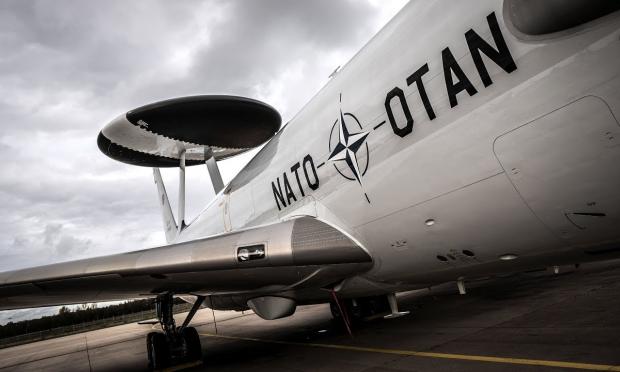NATO surveillance aircraft are patrolling the skies above Romania, monitoring Russian military activity near NATO's borders, a NATO Information Directorate reports.
In line with this, NATO has deployed three E-3A Airborne Warning and Control System (AWACS) surveillance aircraft to Bucharest, Romania to support NATO's enhanced presence in the region and monitor Russian military activity.
AWACS aircraft can track and detect aircraft hundreds of kilometers away, making them ideal for helping to guard allied airspace. After Russia's war in Ukraine, NATO has strengthened its presence in Eastern Europe, including by creating new multinational battle groups and enhanced air defense systems, as well as deploying additional fighters, surveillance aircraft and tankers. In the event of a crisis, AWACS aircraft would provide them with critical elements such as situational awareness, helping them defend allied territory.
The aircraft arrived in Bucharest on 17 January 2023 and deployment will take several weeks. They are part of a fleet of 14 NATO AWACS aircraft based in Geilenkirchen, Germany.
German Air Force Major Christian Brett, Public Affairs Officer, said: "Since the illegal annexation of Crimea in 2014, we have been carrying out these types of surveillance flights over NATO's eastern flank. We have increased our flying hours since the start of the Russian invasion of Ukraine in 2022, to provide NATO commanders and headquarters with the best possible information about what is happening on the ground and in the air. This is a sign of NATO's vigilance and readiness to defend every inch of NATO territory."
Lt. Col. Denis, AWACS tactical officer of the Belgian Air Force says: “So AWACS is basically a flying command and control station. It has radar on board. It also has many detection capabilities on board, and has many communication systems. So we can basically collect a lot of information and distribute it to the partners that we have. That could be airborne partners, but also partners on the ground."
He adds: "So with our radar, we can detect far away and we will create a clear radar image. How is it; This radar image is basically anything that flies into our area of responsibility and will be detected. This means we know who is who and who flies there. And once we have that radar image, we distribute it to our partners using data links, but also by communicating with the partners, using the radios that we have on the aircraft. This means we can talk securely with our partners. We also have the ability to detect ships and generate a surface image and exchange that surface image with the ground as well. Once we have this radar image, we can also check aircraft in our area of responsibility. So basically you can compare us to an air traffic control station, creating a radar image and controlling the aircraft that we have in our area of responsibility. The strategic importance of NATO AWACS here on the eastern flank of the Alliance is that we have a long detection range to the east and we are basically an airborne early warning for the eastern flank of the Alliance."






